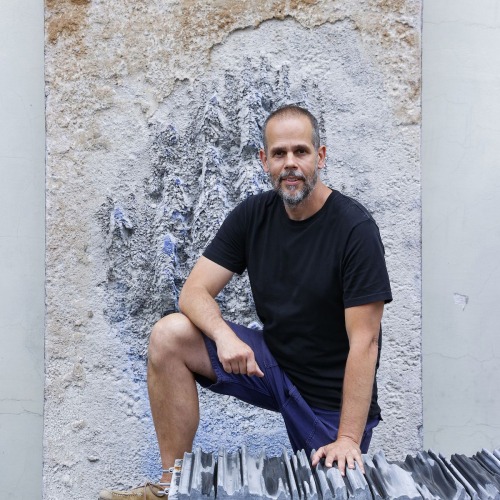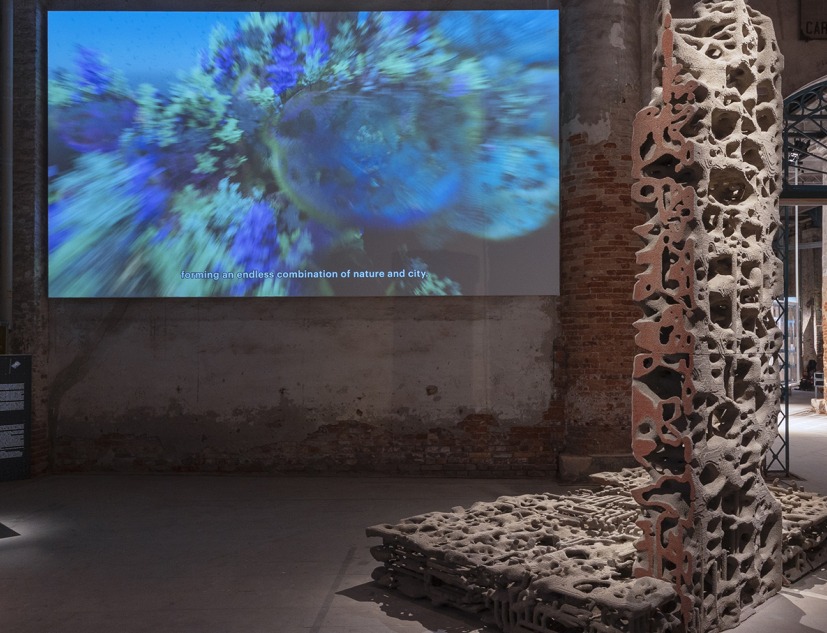Díaz Studio
Federico Díaz (born in Prague, Czech Republic, in 1971) is driven by questions of perception—of seemingly invisible, yet inherently present aspects of our everyday reality and the natural environment. Since the early 1990s, he has used cutting-edge technology to reveal phenomena that elude the human senses. Since the early 2000s, a recurring element in his work has been the use of industrial robots.
From the outset of his career, Federico has anticipated the social and artistic implications of emerging technologies. Most recently, his primary focus has been on artificial intelligence. His ongoing collaboration with Jonathan Ledgard explores non-human intelligence—particularly that of animals—amid an increasingly AI-saturated world.
Federico often works with technologies that later become ubiquitous. For instance, the architectural project E-Area (1998–2008 RIBA, Storefront for art and architecture) proposed a vision of a smart city; Intuit (2000–2002) introduced an early concept of a smart home; Muscoxen (2002–2003) and Sakura (2004–2005) tackled the rise of global corporate influence on bodily autonomy. Later, BIG LIGHT (2016) and its sequel BIG LIGHT: The Space of Augmented Suggestion (2017) envisioned a post-capitalist society in which knowledge is openly distributed through artificially created substances functioning as data storage.
Another key thread in Federico’s practice is the relationship between the human body and its socio-political surroundings. He often draws on Siegfried Kracauer’s theory of the “mass ornament”—a framework through which the behavioural patterns of individuals reveal the cultural, spatial, and political forces shaping them. This approach has informed works such as FluidF1 (2006), LacrimAu (2010, for World EXPO Shanghai), Outside Itself (2011, for the 54th Venice Biennale), and You Welded the Ornament of The Times (2014, for CAFA Museum Beijing). It continues in Eccentric Gravity (2015, at the Prague Castle Belvedere), Etalon (2012, São Paulo Biennial), and Subtile (2013–2018), a series of kinetic public sculptures including a monumental version on the Sacramento riverfront.
This interest in the social choreography of space also shapes BOAR (2022), a speculative robotic creature developed in collaboration with Jonathan Ledgard, LAS Berlin, and the Berlin Biennale. Roaming autonomous territories and rural peripheries, BOAR functions as sensor, storyteller, and observer—exploring planetary trauma, land memory, and more-than-human futures in post-extractive terrains.
Federico’s project Biotopia: Propagative Structures, developed in collaboration with architect Winy Maas, proposes a new kind of built environment—responsive, propagative, and symbiotic. Merging plant intelligence, robotic design, and AI-generated architecture, it envisions a multispecies future of cohabitation and ecological repair. The work was presented as part of the main exhibition at the Venice Architecture Biennale, curated by Carlo Ratti.
The early phase of Federico’s artistic development is marked by a strong desire to establish direct, often physical interaction between the artwork and its viewers, defying the once-dominant belief that art should remain untouched. Early works such as Dehibernation I and II (1993–1994), Generatrix (1999–2002), and Mnemeg (1999–2002) were among the first to explore haptics, artificial life, and autonomous interaction. Concurrently, he pioneered the use of 3D modelling and rapid prototyping in fine art, which was groundbreaking in the late 1990s.
Federico’s work is grounded in the belief that art must remain radically avant-garde. He acts as an archaeologist of possible futures—unearthing and reshaping the structures of perception, belief, and societal habit. This ethos also guided his decade-long tenure as a professor at the Academy of Art, Architecture and Design in Prague, where he founded the Supermedia Studio in 2007, pushing students to exceed the boundaries of convention and imagination.
-
NameFederico Díaz Studio
-
Birth1971
-
VenuePrague, Czech Republic.
-
Website Sitio Web





